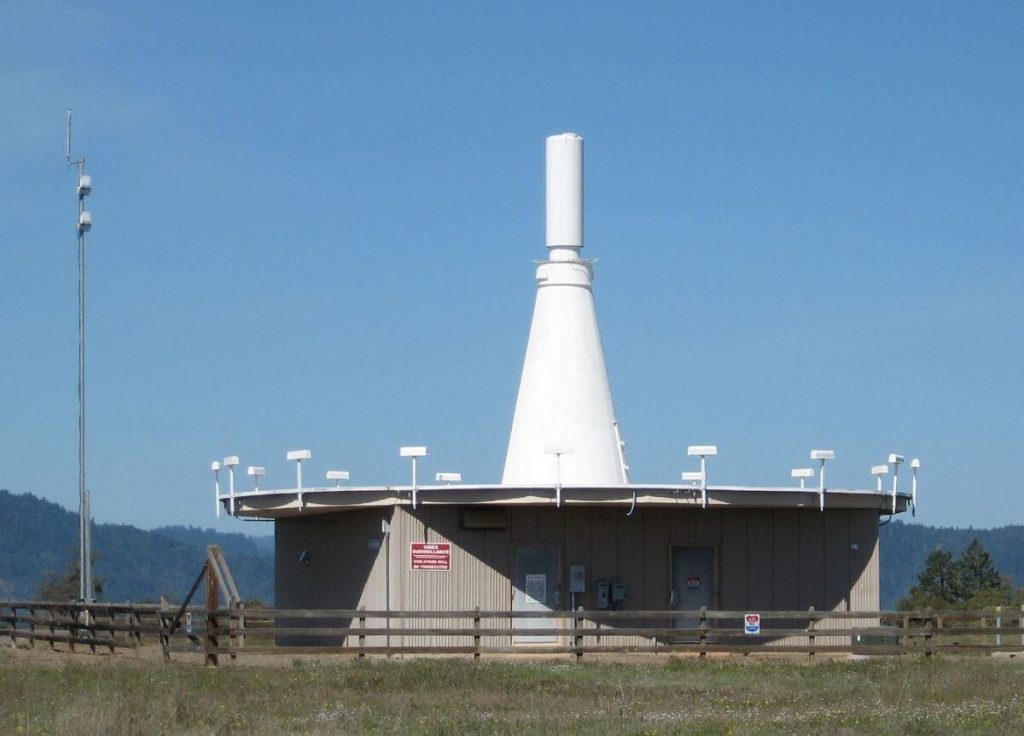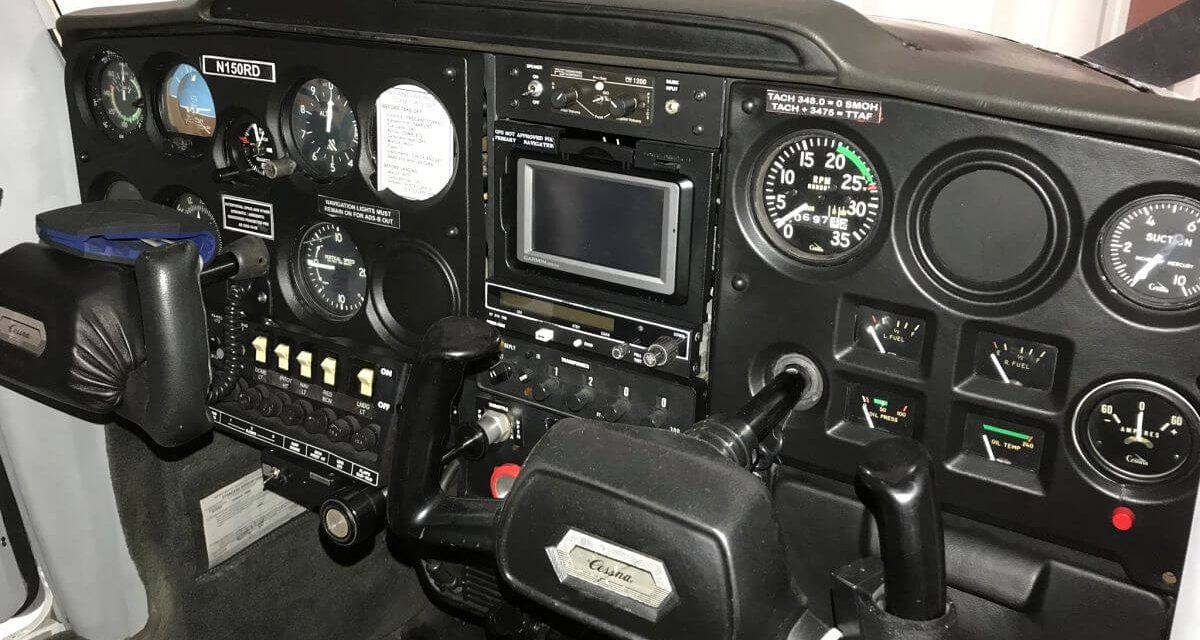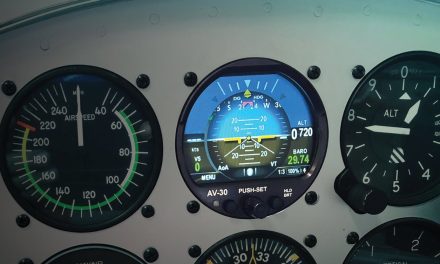When GPS rushed onto the general aviation scene in the late ’90s, it wasn’t long before pilots started talking about the demise of the VOR system. As IFR GPS systems continue to improve in reliability and features, what about ILS?
Hey, we now have more GPS approaches in the country than we do ILS approaches so who needs VOR and ILS anymore? Maybe you do!
On the other side of the equation, let me ask this question: Don’t we need a backup for GPS? We hear of occasional situations where pilots have lost GPS navigation capability in certain areas, we even hear pilots who have said that a GPS problem is common in certain areas. We know of situations where the government appears to be responsible for GPS outages. Heaven help us if we get involved in a conflict of some kind. GPS capability is a “weapon” in the U.S. military today. You know that it will be a target to anyone hoping to minimize us.
The FAA took up this question and started looking seriously at the country’s VOR/ILS systems back in 2011, and while I frequently like to suggest that governments only know two ways to respond to an issue — to over- or under-respond — I think the conclusion that the FAA came to regarding this issue is surprisingly rational.
I advise aircraft owners, mostly legacy owners, on the best way to spend their avionics bucks. This is not the “rip it all out and put in a Garmin stack” crowd. This is the “I fly a $50,000-$60,000, VFR-equipped airplane and now I want to be able to fly light IFR safely — on a budget” crowd. One recent client had $15,000 to spend and he wanted to continue to fly his airplane for the next 10 years. My conclusion was that he can fly his airplane light IFR, but he will have to do it “old school.”
His response was, “But aren’t the VORs going away?” I frankly didn’t have a good answer for him. I wasn’t up-to-date on the subject so I started to dig a little.
VOR Minimum Operational Network (the FAA’s solution)

There are currently 896 VORs operating in the continental U.S. Alaska offers unique issues for pilots and the FAA will give Alaska a special look. In 2016, the FAA solidified a plan that calls for the decommissioning of 310 sites (13 VORs, 155 VOR/DMEs, and 142 VORTACs), 74 by 2020, and the remaining 234 by 2025. The result would be 586 working sites with this goal in mind: You should be able to navigate by VOR anywhere in the continental U.S. if you are at 5,000 feet AGL or above, and you will never be more than 100 nm from an airport that does not require ADF, DME, radar, or GPS; so, if I interpret this correctly, an airport with a VOR or ILS approach. Here are the specific criteria from the FAA:
The following criteria were used by the FAA to determine which VORs would be retained as a part of the MON:
- Retain VORs to perform instrument landing system (ILS), localizer (LOC), or VOR approaches supporting MON airports at suitable destinations within 100 nautical miles (NM) of any location within the CONUS. Selected approaches would not require automatic direction finder (ADF), distance measuring equipment (DME), radar, or GPS.
- Retain VORs to support international oceanic arrival routes.
- Retain VORs to provide coverage at and above 5,000 feet above ground level (AGL).
- Retain most VORs in the Western U.S. Mountainous Area (WUSMA), specifically those anchoring Victor airways through high elevation terrain. Retain VORs required for military use. VORs outside of the CONUS were not considered for discontinuance under the VOR MON Implementation Program.
The following considerations were also used to supplement the VOR MON criteria above:
- Only FAA owned/operated VORs were considered for discontinuance.
- Co-located DME and Tactical Air Navigation (TACAN) systems will generally be retained when the VOR service is terminated.
- Co-located communication services will be relocated or reconfigured to continue transmitting their services.
It was also recommended by the committee that established VOR MON that the program remain in place until 2045! That should put an end to any concerns about trying to fly “old school” IFR in the U.S. for many years. Unfortunately for my client who brought up the question in the first place, his VOR was one of the ones being decommissioned. If you want to know the status of your local VOR, VOR/DME, or TACAN site, download the list here. See the FAA’s VOR/MON page for more information.
This article originally appeared in the September 2019 issue of Cessna Owner magazine.
Flying old school
When I talk about legacy aircraft, I am generally talking about aircraft manufactured before 1985. Frankly, that also applies to pilots. If you learned to fly before 1985, you’re a legacy pilot. Legacy pilots have no problem understanding flying old school. After taking about 15 lessons toward my glider rating in 1973, I was ready to solo. The morning I was scheduled to solo, the tow-pilot didn’t show up. My strong sense of independence kicked in and I bought a 1964 Piper Colt (for $2,800!) and took my first power lesson in my own airplane. The Colt had a single Narco nav/comm with VOR and a transponder. I learned dead reckoning and basic VOR navigation. I was obviously limited to flying to a VOR and then shooting a radial to get to a destination. I can only remember going low to read the highway signs a few times! Frankly, that’s more like preschool than old school. I put about 150 hours on the Colt and I covered New England pretty well with nothing but a single comm and VOR. In retrospect, that was a great way to learn to fly. Fifteen glider flights taught me to fly with no electronic distractions. Glider flying also taught me what the rudder does (I still think most pilots are weak on rudder). That helped a lot when I sold the Colt and bought a Stinson. One hundred and fifty hours flying cross-countries with a single VOR only taught me basic navigation and that’s a good foundation. Frankly, I wonder if you can even learn to fly today with such a basic panel — if a flight school will even teach you that way and whether an examiner will even give you a private certificate with such a basic “foundation.” I don’t know if the regs have changed but learning to fly back then was old school also! Today, it’s not unusual to climb into a modern 172 with a G1000 panel and take your first lesson.
Old school light IFR
When I talk about flying IFR old school today, I’m talking about an avionics panel that fits the mission minus the fancy stuff: GPS, EFIS, MFDs, and big moving maps — you’re out. Frankly, VFR without GPS wouldn’t be far off from what I was doing in 1973. You can do it with a single nav/comm, Mode A/C transponder, and a UAT to meet ADS-B. Of course, there is no need to do this today. A good portable GPS is inexpensive and there is no need not to have one in a VFR platform. An IFR GPS on the other hand, requires a substantial investment, even the new Garmin GPS 175 is about $8,500 installed using a used CDI. That’s a lot less than it was four months ago, but what if you’re trying to turn a legacy aircraft with no audio panel, an outdated and unreliable nav/comm, and an old transponder into something in which you can safely fly (occasional) light IFR and you’ve got $15,000 to spend? You’re stuck with old school navigation.
Let’s talk about what should be in a light IFR aircraft using today’s standards then revert to the old school approach and talk about some equipment options.
What avionics should you have to fly light IFR safely today?
In my opinion, to fly light IFR you need a capable pilot and the following (in the order of priority):
- Dual comms and dual nav sources (VOR, ILS, GPS*). *IFR GPS has become a standard IFR navigation tool.
- An audio panel with markers and an intercom (required with two radios).
- A Mode S/ES ADS-B compliant transponder (WAAS is required) or a universal access transceiver/transmitter (UAT).
- ADS-B In WX and traffic (you need ADS-B In especially for traffic).
- At least a basic autopilot (especially a low-time IFR pilot with family).
- Enhanced engine monitoring (beyond factory basics).
- A 406MHz ELT (recommended in terrain but soon required).
How about old school light IFR?
- Dual comms and dual nav sources (VOR, ILS, maybe DME).
- An audio panel with markers and an intercom (required with two radios).
- A Mode S/ES ADS-B compliant transponder (WAAS is required) or a universal access transceiver/transmitter (UAT).
- ADS-B In WX and traffic (traffic is most important).
- A basic autopilot.
- Enhanced engine monitoring (beyond factory basics).
- A 406MHz ELT (recommended in terrain but soon required).
No GPS means you’re flying VORs and doing ILS or VOR approaches. We’ll ignore ADF/NDB approaches — or maybe not. Some pilots use the ADF to locate outer markers. Without GPS, would you want that option? In today’s environment, the nav/comm has been relegated to the backup comm nav function. In the old school environment, you need two reliable nav/comms. One with glideslope. Would you not want to have precision approach capability? Most of my clients are in the process of getting their IFR rating. You may disagree but I still think a precision approach is the easiest option for a low-time pilot even in the world of GPS. A nav/comm with glideslope is still basic to an old school panel and a reliable second nav/comm with VOR minimum, and maybe even with glideslope, would be good. When you’re deciding what to put as a backup nav source, ask yourself how comfortable you’ll be with only a VOR approach available. The nav/comms become most important in the old school environment.
One problem is that we have very few choices in a reliable nav/comm anymore. On the factory new market, we have the Garmin GNC-255 (about $4,200 retail). Trig is coming to market with a new nav/comm, the TX57 this fall. I’ll know more about this after EAA AirVenture Oshkosh. Frankly, I can think of very few nav/comms on the used market that are worth installing, maybe repairing but not worth the $1,000 to install it. The Bendix King KX-155 has been the fallback used option for years but many legacy units have begun exhibiting display failures. Hopefully, the new TKM MX155 certified will be ready soon. Many have been asking about the delay. I would not consider the Narco MK-12D or Collins VHF 251/VIR 351 as a good new installation but If you’re on a tight budget, these are still viable as a backup. Here’s a hint that I’m almost reluctant to share because of the limited availability and source: Take a look at the Terra by Trimble TX-760D and TN-720D comm and nav combination. These are good radios and there is plenty of parts and good support available through Ellison Avionics in Waco, Texas. Freeflight (which owns the rights and parts to the Terra by Trimble line), designated Troy Ellison as the official repair station. Troy sells and maintains these radios. They are worth a look and you can purchase the nav/comm with CDI for under $2,000! My reluctance, by the way, comes from my knowledge of how busy Troy is currently. My last contact with him suggested he had good inventory available, but you may need to be patient.
This article originally appeared in the September 2019 issue of Cessna Owner magazine.
Conclusion
If your panel is loaded up with the latest avionics, your nav/comm likely doesn’t get a lot of attention. If your budget limits you to old school, your primary nav/comm is the most important item in your panel. Avionics manufacturers aren’t paying a lot of attention there so I’m happy to see that Trig is stepping up and will be offering another option. My expectations for the TKM MX155 are high and I think that will fill the void for the thousands of aircraft owners who still have a KX-155 in their panels. No question, the new Garmin GPS 175 is opening the IFR GPS door for many legacy aircraft owners who, up until now, could not include GPS in their budget. Bottom line, the VOR/ILS system is not going away as many of you (and yes, maybe I) thought. VOR MON is not the cry of a Jamaican pilot seeking the way home — it’s the decision by the FAA that will keep old school IFR available to U.S. pilots for another 25 years.
Until next time — happy and safe flying!





